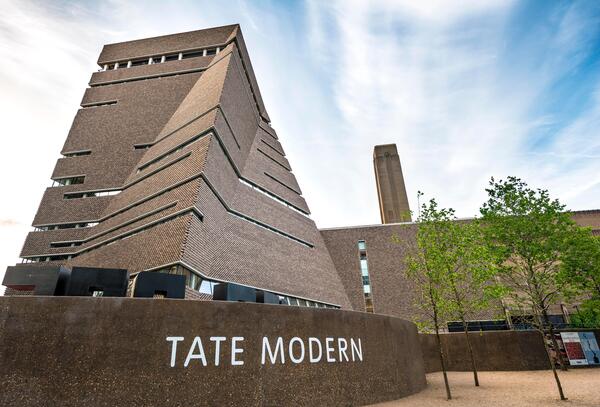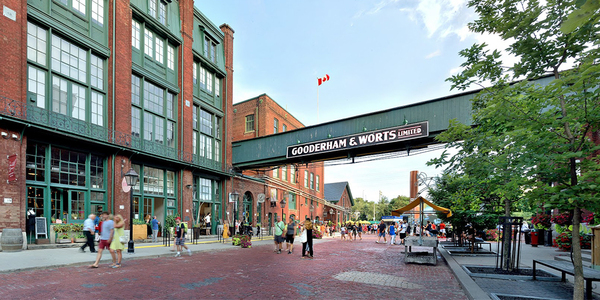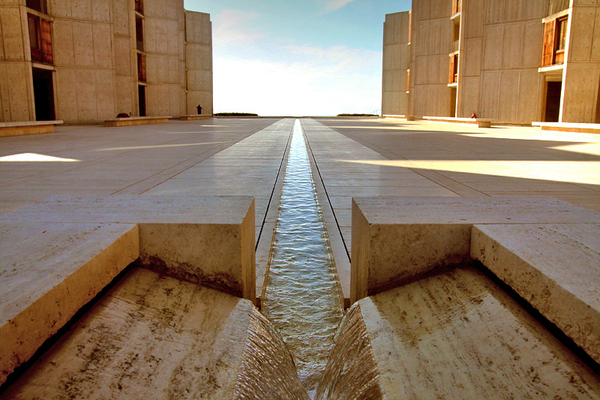.jpg)
Architectural Transformation: Reviving Historic Buildings for the Modern Age
In a constantly changing world where modern structures seem to emerge overnight, historic buildings stand as unwavering guardians, safeguarding echoes from a bygone era. These architectural marvels, adorned with intricate craftsmanship and possessing timeless allure, serve not only as relics of the past but also as guiding lights toward the future. The global movement advocating for the renewal and transformation of these historic edifices, seamlessly integrating them into contemporary society while preserving their architectural heritage, is gaining remarkable momentum.
Within the confines of this article, we embark on a captivating exploration into the domain of architectural adaptation, where the past gracefully converges with the present, and history is not simply relegated to the archives but is instead reinvigorated to shape the prospects of tomorrow. We navigate through landscapes of architectural innovation, examining noteworthy examples that illustrate the harmonious coexistence of tradition and modernity.
These endeavors are more than just architectural interventions; they stand as a testament to our collective dedication to conserving cultural heritage and seeking inventive solutions to address the ever-evolving demands of our communities. The very essence of this global trend transcends geographical boundaries and cultural differences, as communities across the world recognize the intrinsic value that these architectural gems bring to our shared human experience.
In this article, we'll delve into the captivating world of architectural adaptation, highlighting notable examples and shedding light on the challenges involved in breathing new life into these time-worn treasures.
.jpg)
The Renaissance of Architectural Adaptation
Historic buildings, with their intricate facades, timeless designs, and rich cultural significance, often evoke a sense of nostalgia and awe in the hearts of communities. They serve as witnesses to the passage of time, holding within their walls stories of generations long gone. However, the modern world brings with it ever-evolving needs and demands that can challenge the relevance and functionality of these venerable structures.
Recognizing the value of historic architecture, architects and preservationists have begun to seek innovative solutions to integrate these buildings into the contemporary landscape. This has given rise to the trend of architectural adaptation, where historic structures are repurposed to serve modern functions while preserving their unique character and heritage.
The Art of Balancing Preservation and Modernization
At the heart of architectural adaptation lies the delicate balance between preservation and modernization. Architects are tasked with the challenge of retaining the historical essence of a building while ensuring it meets the requirements of today's world.
Here are some key aspects to consider in achieving this equilibrium:
Preservation of Historic Fabric
Preservation begins with a deep understanding of the building's historical significance and architectural features. Careful documentation, historical research, and structural analysis are essential to ensure that the building's integrity is maintained during the renovation process. This includes preserving original materials, such as woodwork, stonework, and decorative elements, whenever possible.
Adaptive Reuse
Adaptive reuse is the heart of architectural adaptation. It involves repurposing historic buildings to serve new functions that align with contemporary needs. This can range from transforming an old warehouse into chic loft apartments to converting a historic school into a vibrant cultural center. Adaptive reuse not only breathes new life into the building but also contributes to sustainability by reducing the need for new construction.
.jpg)
Integration of Modern Amenities
While preserving historic elements is paramount, modernization often requires the integration of modern amenities and technologies. This includes updating plumbing, electrical systems, HVAC (heating, ventilation, and air conditioning), and accessibility features to meet current building codes and standards.
Sustainable Design
Sustainability is a key consideration in modernizing historic buildings. Architects frequently incorporate energy-efficient technologies, such as insulation and solar panels, to reduce the environmental impact of these structures. Additionally, using reclaimed materials and repurposing existing building components can further enhance sustainability.
Notable Examples of Architectural Adaptation
The world boasts a plethora of awe-inspiring examples of architectural adaptation, where history meets modernity seamlessly.
Here are a few noteworthy ones:

Tate Modern, London, UK
Once a colossal power station, the Tate Modern has been transformed into a renowned contemporary art museum. Architects Herzog & de Meuron retained the industrial charm of the building, including its iconic chimney stacks, while creating a cutting-edge cultural institution that draws art enthusiasts from around the globe.

The High Line, New York City, USA
The High Line is a prime example of adaptive reuse on an urban scale. What was once an abandoned elevated railway track on Manhattan's West Side is now a vibrant public park. Landscape architects and designers repurposed the railway into an innovative green space, incorporating native plants and walkways, providing a haven in the midst of the bustling city.

The Distillery District, Toronto, Canada
Toronto's Distillery District is a historic site that has been revitalized into a pedestrian-only village filled with restaurants, shops, and galleries. The red-brick Victorian-era industrial buildings now house a thriving community of artists and entrepreneurs, providing a glimpse into the city's past while serving as a hub for creativity.

The Salk Institute, La Jolla, USA
Designed by renowned architect Louis Kahn, the Salk Institute is a masterpiece of modernist architecture. This research facility was built to blend seamlessly with the natural surroundings while providing state-of-the-art laboratories. Its timeless design continues to inspire architects and scientists alike.
Challenges in Architectural Adaptation
The process of architectural adaptation, while captivating in its aim to breathe new life into historic buildings, is a multifaceted endeavor riddled with a host of formidable challenges and intricacies. These challenges are not merely hurdles but rather significant considerations that architects and developers must navigate with care and diligence:
Regulatory Hurdles
Perhaps one of the most complex aspects of architectural adaptation lies in navigating the intricate web of historic preservation regulations and zoning laws. Every region and jurisdiction may have its own set of rules governing the modification and repurposing of historic structures. Architects and developers find themselves in a meticulous dance with local authorities, ensuring that every proposed alteration aligns meticulously with preservation guidelines.

Budget Constraints
Preserving and modernizing historic buildings often requires a substantial financial commitment. The cost of restoring deteriorated structures, upgrading outdated systems, and seamlessly integrating modern amenities can quickly spiral, often straining the project's budget. This financial burden can become even more pronounced when unforeseen challenges arise, amplifying the importance of meticulous budget planning and contingency funds.
Unforeseen Structural Issues
The age of historic buildings can shroud them in a cloak of structural mysteries. These challenges might remain hidden until the renovation process is well underway. From hidden rot in wooden beams to deteriorated foundation supports, such unexpected issues can significantly disrupt project timelines and inflate costs. Careful and comprehensive structural assessments become paramount to mitigate these surprises and ensure the project's success.
Balancing Aesthetics and Functionality
The art of maintaining the aesthetic integrity of a historic building while adapting it to modern needs is a delicate and intricate juggling act. Architects must seek ingenious solutions to blend the old and the new seamlessly. The challenge lies in respecting the historical significance and architectural beauty of the structure while ensuring that it remains a functional and relevant space for contemporary use. Achieving this balance requires a deep understanding of architectural history, and materials, and a keen eye for design that can harmoniously merge tradition with innovation.
Bridging the Gap Between Past and Present
Architectural adaptation stands as an adaptation that represents a compelling movement within the field of architecture, showcasing the remarkable potential of historic buildings to not just survive but thrive in the dynamic context of the modern world. With meticulous care, architects are redefining these structures, preserving their unique character and rich histories, all while imbuing them with newfound purpose. In doing so, they are not only revitalizing the physical spaces but also making an enduring contribution to the preservation of our collective cultural heritage.
The awe-inspiring examples mentioned earlier, from the transformation of the Tate Modern to the resurrection of The High Line, are shining exemplars of what can be achieved when the old seamlessly intertwines with the new. It is essential to recognize that the journey toward successful architectural adaptation is not a straightforward one; it is laden with formidable challenges. The labyrinthine maze of regulatory hurdles, the weight of budget constraints, and the unexpected structural complexities can cast shadows on even the most ambitious of projects. However, these challenges, when met with dedication and innovation, are integral components of the transformative process.
As we move forward into an increasingly urbanized world, the need to balance preservation and modernization becomes ever more critical. Architectural adaptation serves as a testament to the enduring power of history and the boundless creativity of contemporary architects. Through this harmonious blend of past and present, we can continue to cherish and celebrate our architectural heritage while embracing the innovations and aspirations of the modern age.
In summation, architectural adaptation extends to us a visionary bridge, a connection between the past and the future. It allows us to honor our history while paving the way for a more sustainable and vibrant urban landscape. This trend is not merely a transformative force in our cities but also a poignant reminder that our architectural heritage is a living legacy, a testament to human ingenuity and creativity, destined to be cherished and enjoyed by generations yet unborn.
Check https://app.bidlight.com for how BidLight can help you estimate your BIM model!